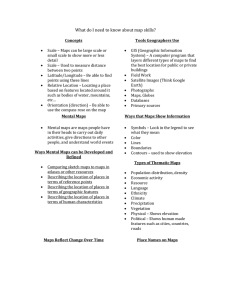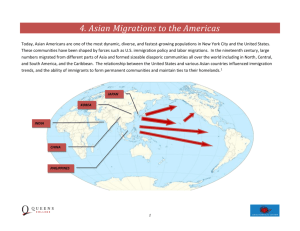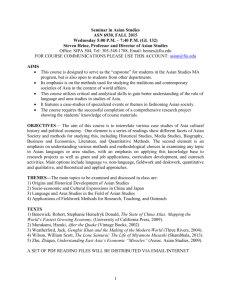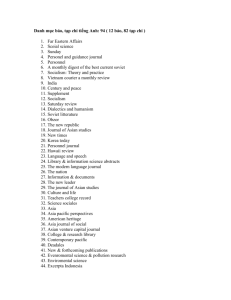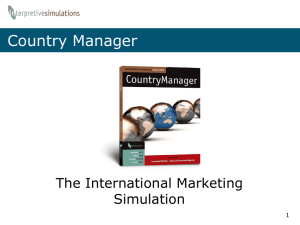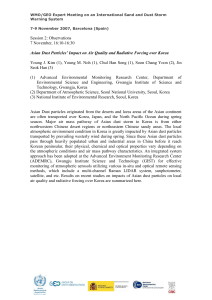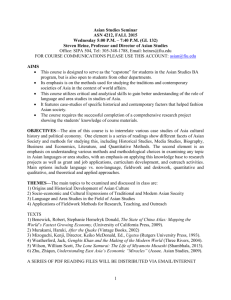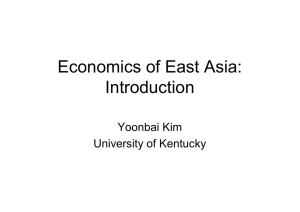Cross Culture Comparison of Asian Countries
advertisement
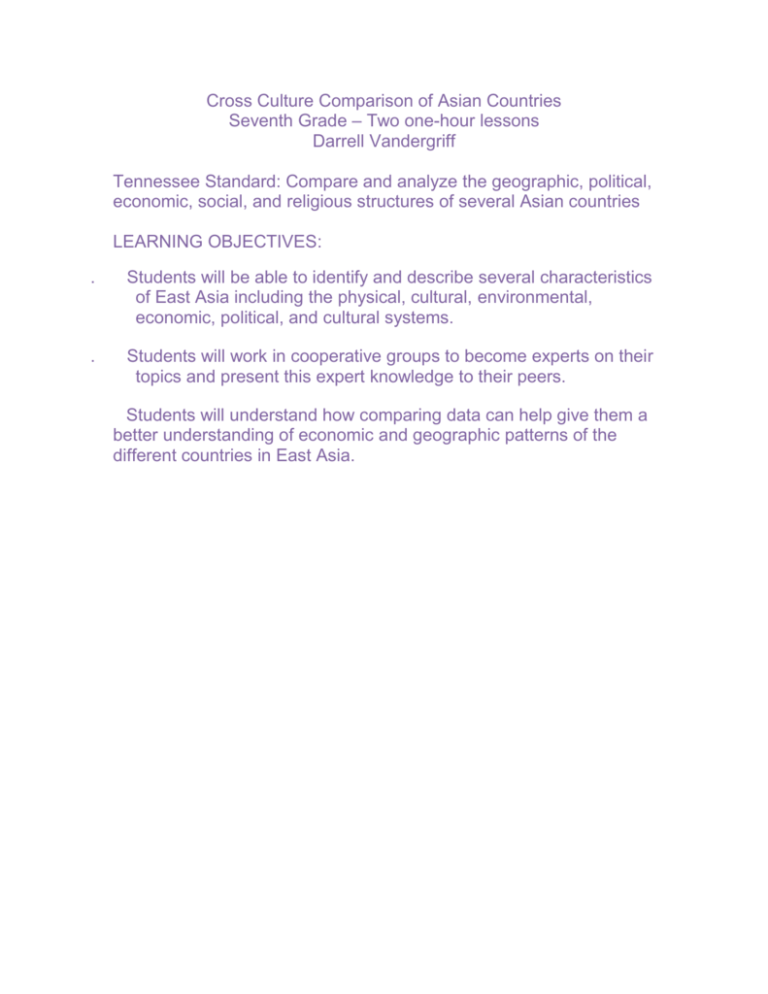
Cross Culture Comparison of Asian Countries Seventh Grade – Two one-hour lessons Darrell Vandergriff Tennessee Standard: Compare and analyze the geographic, political, economic, social, and religious structures of several Asian countries LEARNING OBJECTIVES: . Students will be able to identify and describe several characteristics of East Asia including the physical, cultural, environmental, economic, political, and cultural systems. . Students will work in cooperative groups to become experts on their topics and present this expert knowledge to their peers. Students will understand how comparing data can help give them a better understanding of economic and geographic patterns of the different countries in East Asia. . LESSON ONE: ONE HOUR . Using the above charts and a map of the world, identify different regions and countries of East Asia. . Ask for volunteers to identify the countries included in the region. (China, Japan, Mongolia, North Korea, South Korea, Taiwan) . Then, ask students, “What comes to mind when you think of East Asia?” Encourage all responses at this point in the lesson. Record student responses for use at the end of the day’s lesson. DEVELOPING THE LESSON *Divide students into groups of three or four (one group for each of the categories in the regions). Provide each group with copies of the Country Profiles. Use these as well as the classroom textbooks and any other electronic or paper resources to research their topic. *Indicate that each group’s task is to become experts in their assigned category for all the Asian countries included in your study. Each group will be asked to present its research to the rest of the class, with all group members participating in the presentation. The topics can include as many or as few of the following depending on the number of students in your class. That will also determine the size of each group. Many of the topics can be combined for one group as well. Topics: Religion, Population, Age of Population, Government, School System, Entertainment and Sports, Usable Land Mass, Agricultural Production, GNP, Major Industry and Manufacturing, Literacy Rate, Unemployment Rate. This is not intended to be an exhaustive list, but a good overall study. *Give each group about 20 minutes of class time to begin their research so the teacher can help steer each group in the right direction in case of any questions. Each group is to learn as much as they can about the assigned category. Each group member is to take part in the presentation. *Return to the list generated at the beginning of the lesson, in response to the question: “What comes to mind when you think of East Asia?” Ask the students if they have changed their minds about what comes to mind in light of their started research. Ask if there are any questions about their presentation. Each presentation should last 4-6 minutes. It can be aided with visual aids, posters, PowerPoint presentations, etc. The methodology of the report should be left to each group to decide. Remind them each member must take part in the actual presentation. LESSON 2 – ONE HOUR *Allow time for students to discuss some things they learned last class period about Eastern Asian Countries. * Have each group give their presentations * Share the map on the next page reviewing some of the material from the presentations and filling in any gaps not covered by the student’s presentations. Show pictures/videos of the different areas either from personal trips or online sources. Review for an assessment Assessment: . Ask students to write an essay and to imagine they are business people interested in conducting business with China, South Korea or Japan. How would you decide whom to work with? What kind of information would you need? How could you compare the economies of the three countries? What advantages are there in each country for the families of the employees who will be relocating there? Sources: www.infohio.org http://web-japan.org http://www.economist.com/node/21599567/print http://www.brookings.edu/research/opinions/2013/08/20-chinademographic-crisis-pozen . CIA World Factbook Culturegrams (must have subscription to use) Internet World Stats Library of Congress Country Studies National Geographic Society Xpeditions National Geographic Society EarthPulse Rubistar http://www.rubistar.4teachers.org/index.php Education About Asia, Volume 16, Number 2. U.S., Asia, and the World: 1620 – 1914. Education About Asia, Volume 17, Number 3. U.S., Asia, and the World: 1914 – 2012. .

